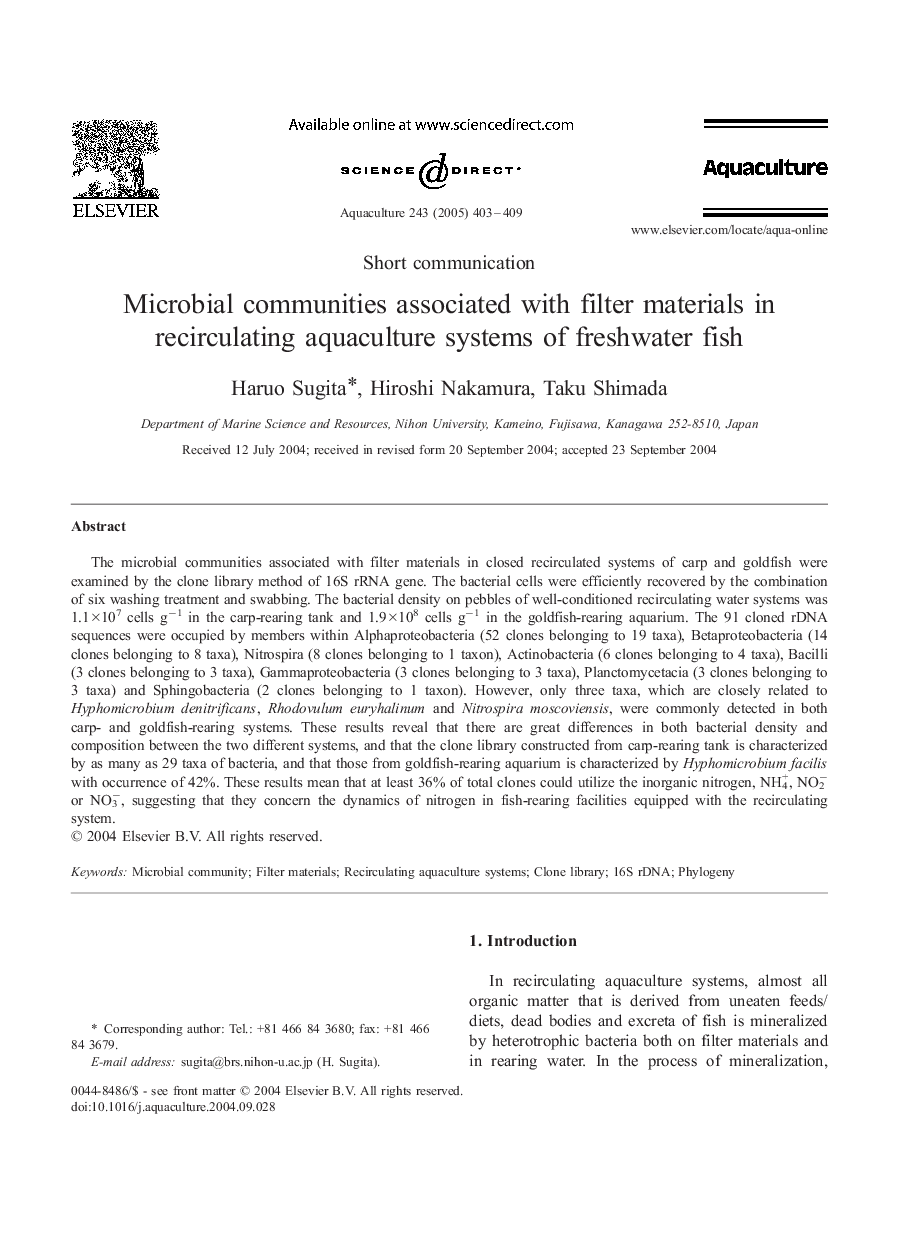| Article ID | Journal | Published Year | Pages | File Type |
|---|---|---|---|---|
| 8975021 | Aquaculture | 2005 | 7 Pages |
Abstract
The microbial communities associated with filter materials in closed recirculated systems of carp and goldfish were examined by the clone library method of 16S rRNA gene. The bacterial cells were efficiently recovered by the combination of six washing treatment and swabbing. The bacterial density on pebbles of well-conditioned recirculating water systems was 1.1Ã107 cells gâ1 in the carp-rearing tank and 1.9Ã108 cells gâ1 in the goldfish-rearing aquarium. The 91 cloned rDNA sequences were occupied by members within Alphaproteobacteria (52 clones belonging to 19 taxa), Betaproteobacteria (14 clones belonging to 8 taxa), Nitrospira (8 clones belonging to 1 taxon), Actinobacteria (6 clones belonging to 4 taxa), Bacilli (3 clones belonging to 3 taxa), Gammaproteobacteria (3 clones belonging to 3 taxa), Planctomycetacia (3 clones belonging to 3 taxa) and Sphingobacteria (2 clones belonging to 1 taxon). However, only three taxa, which are closely related to Hyphomicrobium denitrificans, Rhodovulum euryhalinum and Nitrospira moscoviensis, were commonly detected in both carp- and goldfish-rearing systems. These results reveal that there are great differences in both bacterial density and composition between the two different systems, and that the clone library constructed from carp-rearing tank is characterized by as many as 29 taxa of bacteria, and that those from goldfish-rearing aquarium is characterized by Hyphomicrobium facilis with occurrence of 42%. These results mean that at least 36% of total clones could utilize the inorganic nitrogen, NH4+, NO2â or NO3â, suggesting that they concern the dynamics of nitrogen in fish-rearing facilities equipped with the recirculating system.
Keywords
Related Topics
Life Sciences
Agricultural and Biological Sciences
Aquatic Science
Authors
Haruo Sugita, Hiroshi Nakamura, Taku Shimada,
